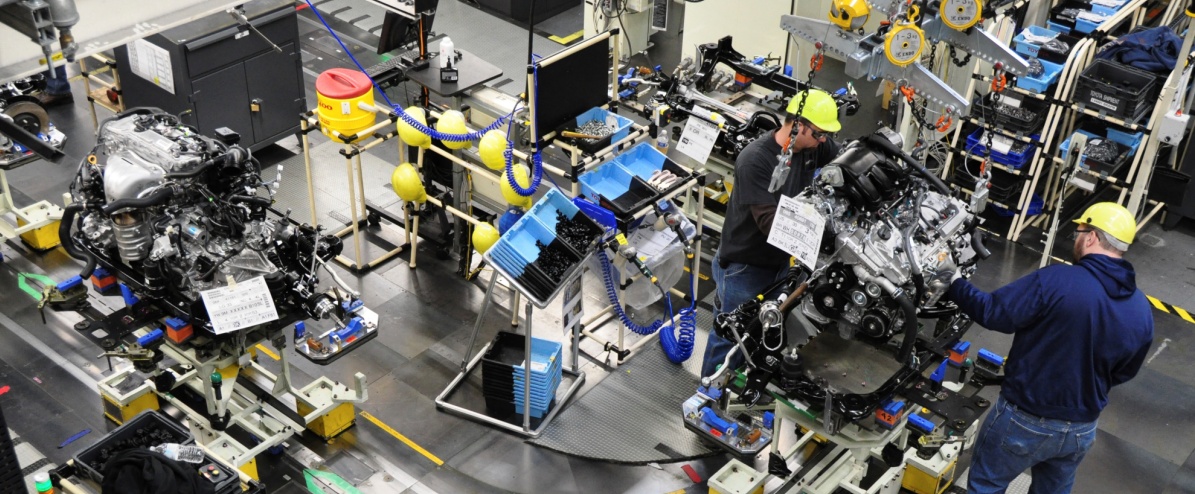How Toyota Toppled GM to Become the World’s #1 Auto Manufacturer
3 minutes, 47 seconds read

For 78 years, Detroit-based General Motors Co. (GM) held a legacy as the world’s largest auto manufacturer. The company surpassed Ford Motor Co. in that title by reevaluating how it responded to consumer demands. It began offering more style and power in vehicles. It also innovated by introducing consumer financing. By the early 1950s, GM was one of the world’s largest employers and would continue to be the world’s largest vehicle manufacturer for much of the 20th century.
When GM president Charles Wilson became U.S. Secretary of Defense in 1953, he commented, “What was good for the country was good for General Motors and vice versa.”
At that time, on the other side of the globe, a manufacturing transformation was taking place. It took slow steps forward — in fact, the foundation of the principle of kaizen — but in 2007, fueled by a reputation for providing reliable vehicles, Toyota overtook GM to become the world’s largest automotive manufacturer. The company credits its Toyota Production System (TPS), the precursor to Lean now used in countless organizations around the globe.
The foundation of TPS
Toyota traces the origins of TPS to Sakichi Toyoda, who developed an automatic loom in 1924. The loom was the first step in developing a philosophy around the elimination of waste to achieve efficiency. But it’s Taiichi Ohno, a production engineer at Toyota, who is credited with developing TPS.
In the years after World War II, the relatively new vehicle manufacturer trailed in sales behind its Detroit-based counterparts. Ohno believed that its production lagged due to excess waste and inefficiency. With backing from company president Eiji Toyoda, Ohno establish TPS around the goal of reducing cost and saving time. Through these savings he aimed to deliver greater value to the customer. TPS achieves this goal by eliminating overburden (muri), inconsistency (mura), and waste (muda) to improve production processes.
There are two ways in which TPS achieves this goal: just-in-time delivery and “jidoka.”
Just-in-time refers to producing only what is needed when it is needed. That means, in part, having materials at the ready to begin work as soon as an order is placed.
Jidoka is often translated as “automation with a human touch.” The idea is that when a problem occurs during production, the process stops immediately. This prevents waste from producing defective products. Achieving jidoka requires human engineers to build by hand and continuously improve upon systems until they are reliable and safe. In many ways this was revolutionary because this process encouraged employees to look for problems rather than turning a blind eye for fear of punishment.
Committing to ongoing improvement
The key for Toyota’s success wasn’t solely in establishing these waste-focused processes. In many ways, success came from establishing these processes and then continuously working to improve at every step. Kaizen, often translated as continuous, ongoing improvement, is a people-oriented philosophy and action plan focused on problem solving.
Why people-oriented? Kaizen-oriented companies commit to searching for ways to improve product quality and lower costs as a way to better serve customers. Making these improvements means encouraging frontline operators to look for problems and talk to management about solutions. Rather than tasking workers with doing more in less time, kaizen encourages companies to develop better processes that support workers.
Toyota today
Today, Toyota and its peers in the automotive industry are facing new challenges but Toyota holds fast that TPS will remain part of its solutions. In 2017, Toyota recreated its TPS group to “consolidate the strengths of Toyota, with an aim to improve productivity in areas outside of production by promoting the TPS in such areas.” The group is re-evaluating how to apply continuous improvement to newer businesses, such as car-sharing, connected vehicles and virtual reality-based production.
“The automotive industry is now hurtling into an era of profound transformation, the likes of which come only once every 100 years,” commented Akio Toyoda, Toyota president, at a 2018 press conference. “I view this once-in-a-century era of profound transformation, the likes of which come only so often, as a major opportunity, and I approach it as an endeavor to create a new future ourselves with unprecedented speed and imagination.”
As technology evolves and more processes move online, TPS remains committed to the idea that listening to the people making things remains the best way to move innovation forward.
Like this content? Sign up for our Newsletter
[hubspot type=form portal=561211 id=fda6d445-739e-4072-8dae-68b94971a266]THE FRONTLINE DOJO
More Articles
How to develop the next billion Knowledge Workers
3 minutes, 51 seconds read
Digital transformation in manufacturing is not what you think it is
10 minutes, 36 seconds read
The human side of change management: lessons learned from Toyota, Airbus, and Silicon Valley
1 minute, 28 seconds read
The true meaning of Genchi Genbutsu
3 minutes, 5 seconds read